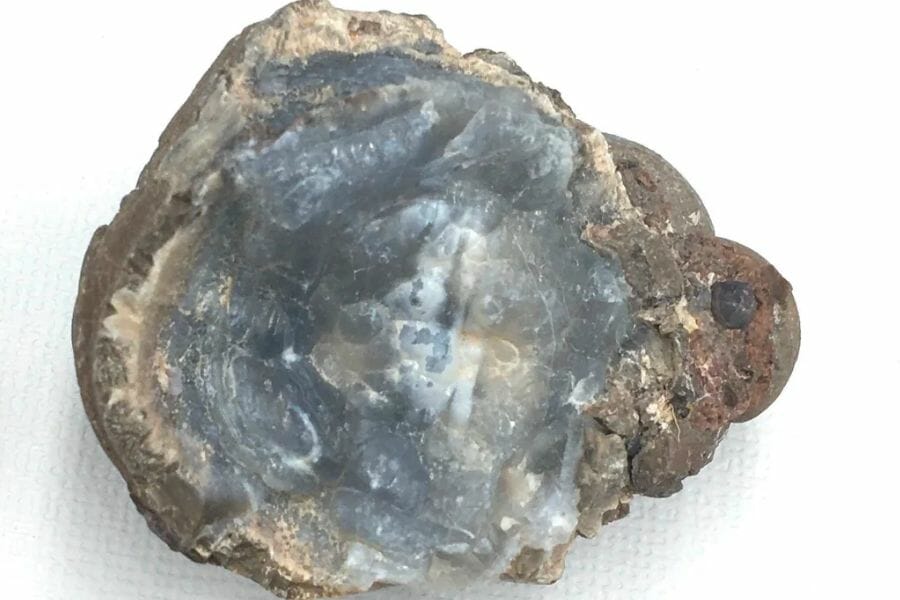Have you ever seen a geode up close? If you’re a rock collector or simply interested in the natural world, then you know that geodes can be some of the most fascinating and beautiful rock formations out there. Finding geodes in North Carolina can be quite a challenge though! But don’t worry, because we’ve gone through the trouble of exploring and scouring our state to find the best spots for geode hunting.
It’s true that these geological wonders can be hard to come by, but with a bit of persistence and some helpful tips, you too can discover the hidden gems here. In this article, we’ll share our findings and offer some advice on how to maximize your chances of finding geodes, so grab your pickaxe and let’s get started!
What Are North Carolina Geodes?
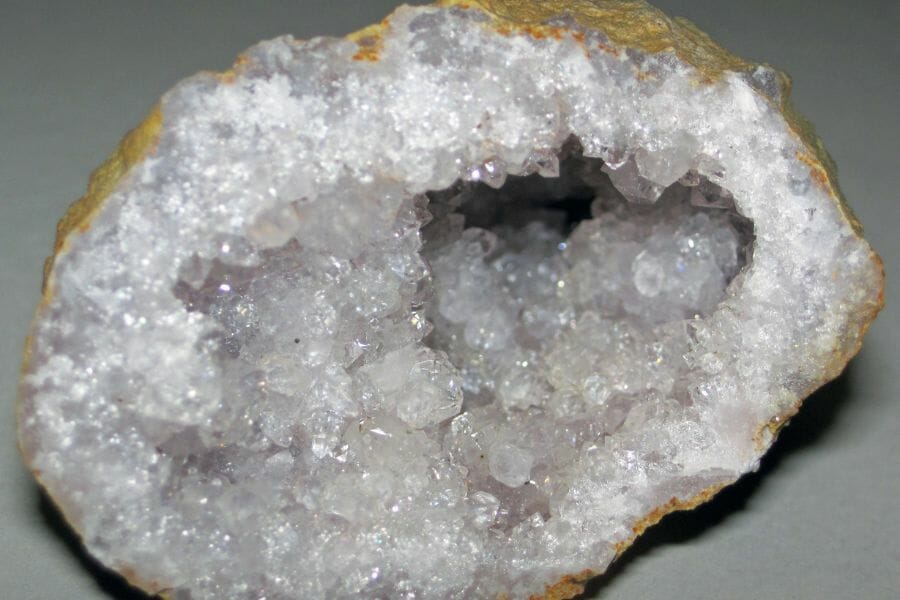
Geodes are small, hollow rock formations that are typically round or oblong in shape. They are formed when minerals crystallize inside a cavity or bubble within a larger rock over a long period of time— as in hundreds of thousands or even millions of years! North Carolina’s unique geology allows for this geode formation possible!
What exactly does a geode rock look like? We’ve put together a simple guide that can answer this question.
Geodes can be found all over the world, and their size, shape, and color can vary depending on the specific minerals and conditions present during their formation. When a geode is cut open, it can reveal a stunning array of crystals in different shapes, sizes, and colors. Some geodes even contain fossils or other ancient treasures that provide insight into the Earth’s history.
The Type Of Geodes Found In North Carolina
All over the world, there are tons of different kinds of this fascinating wonder and the value of a geode depends on what kind it is. In North Carolina, Hyalite Opal Geodes abound.
- The deep experience and understanding of our team about the area
- Recommendations from local groups and clubs
- How easy it is to get the a particular location
- Safety and potential hazards when collecting
- Weighing private and public locations
- The ability for both experienced and novice geode enthusiasts to find great samples
With these factors in mind we’ve been able to put together a fantastic list that just about anyone can use!
The Best Place To Find Geodes in North Carolina
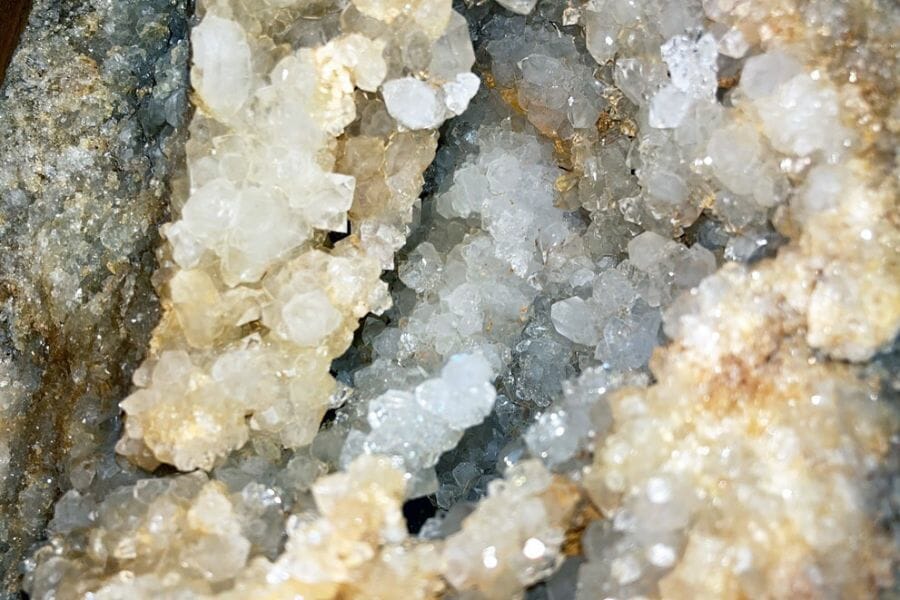
You might already know the great places to mine gems in North Carolina, but not all of these places have geodes in them. The location we’ll share with you may not be the most well-known, but it sure is the top confirmed place to find geodes in North Carolina!
Always Confirm Access and Collection Rules!
Before heading out to any of the locations on our list you need to confirm access requirements and collection rules for both public and private locations directly with the location. We haven’t personally verified every location and the access requirements and collection rules often change without notice.
Many of the locations we mention will not allow collecting but are still great places for those who love to find beautiful rocks and minerals in the wild without keeping them. We also can’t guarantee you will find anything in these locations since they are constantly changing.
Always get updated information directly from the source ahead of time to ensure responsible rockhounding. If you want even more current options it’s always a good idea to contact local rock and mineral clubs and groups
Shooting Creek
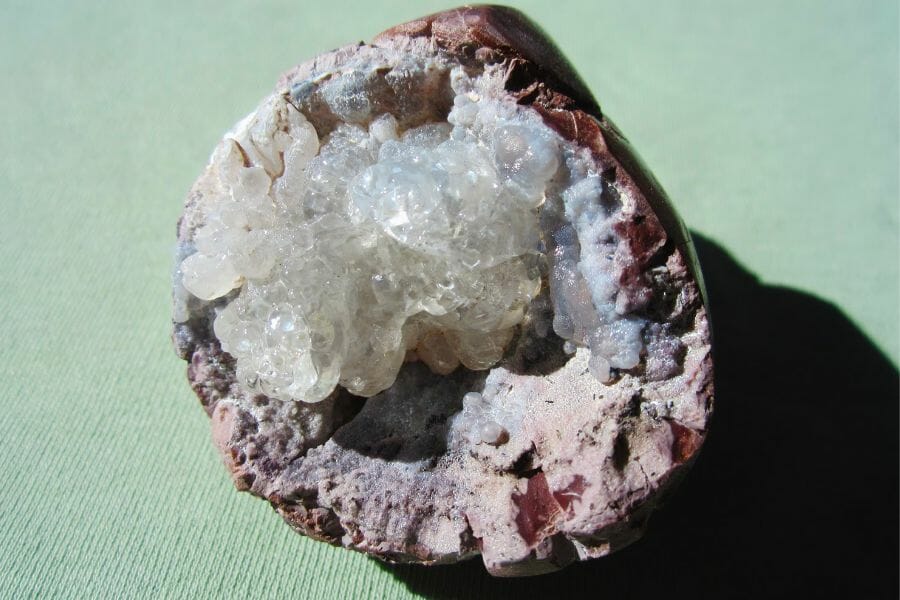
Shooting Creek is a sweet spot for anyone who loves outdoor activities by the water. It starts up in the Nantahala National Forest and flows down to the Hiwassee River. It has a hilly terrain, with lots of forest around. It also has some pretty interesting rock formations.
To get here, you have to take some windy roads,. There are a few access points where you can park and get down to the creek, but some of them are a bit steep so watch your step!
But before you start packing your bags and preparing for your geode hunting here, make sure to check North Carolina’s most recent guidelines first.
Where we found geodes at Shooting Creek
Shooting Creek in Clay County is the only confirmed place in our state where you can find Hyalite Opal geodes. Specifically, you can find them on the creek’s area exposures, outcrops and gravels.
DON'T MISS OUT ON ANY GREAT FINDS!
While you're out searching for Geodes you're going to find a lot of other interesting rocks and minerals along the way. The last thing you want to do is toss out something really interesting or valuable. It can be easy to misidentify things without a little guidance.
We've put together a fantastic field guide that makes identifying 140 of the most interesting and valuable rocks and minerals you will find REALLY EASY. It's simple to use, really durable, and will allow you to identify just about any rock and mineral you come across. Make sure you bring it along on your hunt!
Common Geode-Hunting Questions
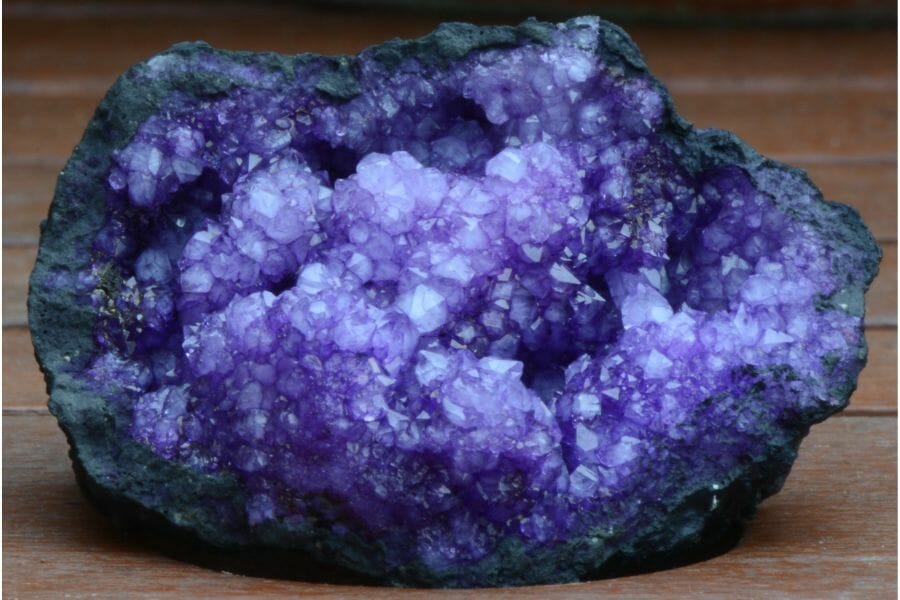
If you’re looking for geodes in North Carolina, chances are you also have these frequently asked questions in mind. Don’t worry because we’ll answer them for you.
Where can you find amethyst geodes in North Carolina?
Unfortunately, amethyst geodes do not naturally occur in North Carolina. But there are a number of rock and gem shops that sell them here. We made a list of some of them below.
Is it illegal to collect geodes in North Carolina?
If you’re complying with local collecting laws, you’ll have no problem collecting geodes here. Just make sure to check local regulations if you’re collecting from government lands and to obtain permission if you’re exploring private lands.
The Best Places To Buy Geodes In North Carolina

If you have a dime to spare and prefer the easy way of getting your hands on geodes, we made a list of some of the famous shops here where you can buy them. Check them out!
- Points of Light Crystal and Mineral Gallery – 391 Merrimon Ave, Asheville, NC 28801
- Amazon – There are some pretty amazing options for geodes in Amazon. There are even cool kits to crack them open.
- Treasure Quest Mining – 414 Upchurch Street, Apex, NC 27502
- Mineralogy at Triangle – 5959 Triangle Town Blvd #2055, Raleigh, NC 27616
- Crystal Mountain Gem Mine – 31 S Broad St, Brevard, NC 28712
- Blue Earth Traders Rock Shop & Gem Mine – 3894 Soco Rd, Maggie Valley, NC 28751
- Gem Avenue Jewelry & Crystals – 400 E Arrowhead Rd. Charlotte NC 28213
- Ruby City – 130 E Main St, Franklin, NC 28734
- Cornerstone – 52 N Lexington Ave, Asheville, NC 28801
- Enter The Earth – 1 Page Ave #125, Asheville, NC 28801
- Stoneage Natural Rocks & Crystals – 419 Cross Creek Mall Unit TA-02D, Fayetteville, NC 28303
- Lilac Light Crystals – W Chatham St, Cary, NC 27511
- Ashville Gem Mines – 26 Sardis Rd unit 100, Asheville, NC 28806
- Artisan Jewelrs Gemstone & Mineral Gallery – 3348 Georgia Rd, Franklin, NC 28734
- The Crystal Garden – Timberlyne Shopping Center, 1129 Weaver Dairy Rd, Chapel Hill, NC 27514
- Elijah Mountain Gem Mine – 2120 Brevard Rd, Hendersonville, NC 28791
Additional places to find geodes in nearby states
Check out our guides for nearby states if you’ve already tried all of our suggestions above or if you’re planning a trip outside of the state:
If you have any recommendations for our list please leave a comment below!

